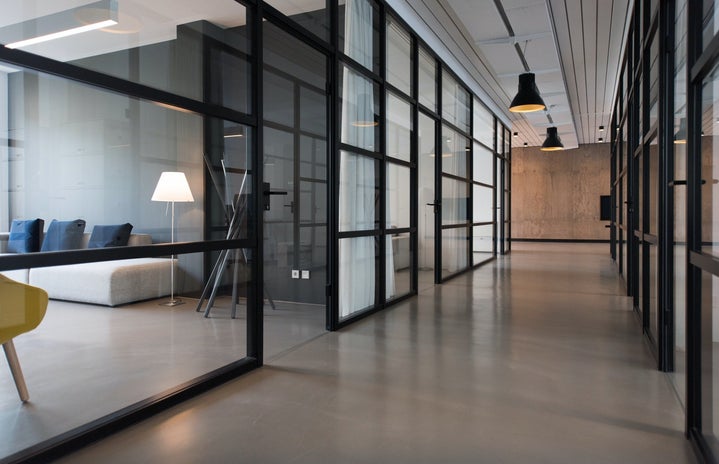Earning the National Gold Award Girl Scouts, means not only thoroughly researching an issue but finding the most practical means to help combat it. The girl scouts rewarded are ones who find real sustainable solutions, work hard to raise awareness, and keep people informed. Kelly Culhane, the first girl scout from Miami to earn the title, and her work with Ear Peace: Save Your Hearing Foundation stands as a great example of the thorough activism the award encourages. Kelly did everything in her means to spread awareness for just how big of an issue hearing loss is, especially among younger people, despite the popular misconceptions out there. She took advantage of every platform, medium, and resource possible to teach everyone about how to combat this issue. From workshops to poster and brochures in doctor offices, Kelly created many means for people to stay informed. She even has a Youtube channel with interviews with experts about hearing loss. Lucky for us, she’s offered even more access to valuable information to save our hearing, in this interview with Her Campus. So if you want to find out more about this issue and how to perserve your hearing (which you should absolutely want, given how we’re in New York, a city full of noise pollution), keep reading for Kelly’s advice.
Her Campus: What stood out to you about this issue?
Kelly Culhane: 1 billion teens and young adults are at risk of Noise-Induced Hearing Loss (NIHL) from damaging levels of sound due to unsafe use of personal audio devices and noisy entertainment venues. 1 in 5 teens in the U.S. have permanent hearing damage by age 19. Nearly 3 times as many 2nd graders and 4 times as many 8th graders are now diagnosed with hearing loss compared to just 10 years ago. 50% of high school students have reported at least one symptom of permanent hearing loss, such as tinnitus or ringing in the ears that can be permanent. Musicians are especially at risk for NIHL due to the many hours they spend practicing their instruments and performing. NIHL has both short- and long-term consequences for health, education and social well-being. Most young people won’t notice symptoms of NIHL until the problem becomes advanced. Although NIHL is painless, progressive, and permanent, it is also entirely preventable. The root cause of NIHL is lack of awareness. At the beginning of my freshman year, while searching for a topic for my Girl Scout Gold Award project, I heard a classroom interview on National Public Radio with Adele Sandberg, Founder of the Ear Peace: Save Your Hearing Foundation. She discussed NIHL in children, how she used pipe cleaners to demonstrate to elementary students the permanent damage done by loud sounds to the 18,000 tiny hair cells we are born with in each ear, and how simple it is to protect our hearing. After learning more about the scale of this issue, and having been involved with music my entire life, I decided to take action.
HC: What was it like having to teach so many different kinds of people, from fourth graders to teachers, about this issue?
K: I really enjoy being able to teach people of different ages about this issue because it shows how hearing loss can happen to anyone. Teaching younger students is especially fun and rewarding since they often become very interested and aware about how loud the world is and what they can do to protect their hearing. Teachers also find it very eye-opening and useful because they can take it back to the classroom to teach to their students, as well as spread awareness every day in their communities. In order to reach audiences other than teenagers, such as elementary school students, parents, teachers and pediatricians, I had to carefully shape my message to make it as clear and impactful to each group as possible.
Image as seen on the Girl Scouts of the USA Youtube channel
HC: I love that you encourage students to go home and tell their families about hearing loss. How do you go about encouraging students to go out and continuing to spread awareness?
K: Getting my message across to teenagers and adapting my message to reach different audiences were the main challenges I dealt with during the completion of my project. From the start, I knew it would be difficult to convince teens that NIHL could potentially be a serious problem for them. Many teens find the idea of hearing loss at a young age too hard to believe, most likely because they haven’t noticed any related problems yet. To tackle this issue, I made sure to speak to teens and young adults directly. Because young people tend to make decisions based off what they see others do, I decided to take advantage of that tendency in a positive way by protecting my hearing and continuing to repeat and emphasize how often hearing loss in young people occurs. Doing this enabled me to effectively get my message across and have a lasting impact For example, my friend, who is the current student Band Master of a marching band, recently had his hearing tested after becoming aware of NIHL through my project. As a member of the marching band and jazz ensemble, and lead guitarist for his newly formed rock band, he has been passionately involved in music for years, and found it came with a cost. His hearing test showed that he has permanent hearing damage in one of his ears due to his high involvement in music – something he will never get back. He has since changed his behavior, and now takes careful steps to protect his hearing using ear plugs at each rehearsal and performance, learning to continue and enjoy his passion safely, which is what I aim to achieve on a large scale.
HC: You made use of so many mediums to spread your message, from creating posters to producing video skits – can you speak to how all these different mediums helped your cause?
K: Using videos, posters, and brochures as ways of spreading my message made it easy for people to become interested. I made sure to make each medium appear youthful so that it would catch young people’s attention with hopes that they would stay interested in learning about the topic or at least ask for more information. I also wanted to catch the attention of teachers, doctors, parents, and everyone else who would see them. In the videos especially – as a teen speaking to teens – a young person may be more inclined to listen when they see another teenager discussing an issue that affects people at such a young age.
A congratulatory post on the Ear Peace instagram on Kelly’s award win
HC: What are some everyday changes you’d like to see people make to protect their hearing?
K: I would like to see people change the way they think about the world today. Sounds don’t have to be blaringly loud to be enjoyed, and we also don’t have to lose our hearing in the process of “enjoying” them. Wearing hearing protection is an easy and simple way to protect our ears and if everyone carried a small clip on their keychain with earplugs, it would easily prevent hearing loss due to overexposure to loud sounds. I hope to see parents raise their children to protect their ears so that they live a long life of healthy listening.
HC: How has doing this project changed your love for/the way you make music?
K: Even after completing my project, my love for music has remained just as great as it was before I started. I enjoy both listening to and performing music, especially Jazz and Classical. The only thing that has changed has been my approach to the way I listen to music. I am much more careful about the amount of exposure I have and when I should wear hearing protection. We can all still love music and sound, the key is doing it knowledgeably and cautiously.
HC: What has been your proudest moment with this project?
K: My proudest moment was teaching young kids about this topic, seeing their interest in learning about it grow, and even wanting to teach their parents about it.
HC: What has been your biggest learning moment with this project?
K: The biggest learning moment with this project came at the start when I first began learning about Noise-Induced Hearing Loss and the large scale impact it has. . I realized that there are so many loud sounds in the world, such as noise at sporting events, restaurants, movie theaters, and arcades. I have also learned that I can still enjoy music and everything else as long as I take precautions to protect my hearing.
HC: What’s next for you and Ear Peace?
K: As an Ambassador for the Ear Peace: Save Your Hearing Foundation, and as one of the 2018 National Gold Award Girl Scouts, I will continue to make a national impact on young people regarding this global issue. I will continue to train teachers in the Foundation’s hearing conservation curriculum. As the first National Gold Award Girl Scout representing South Florida, I have been invited to speak at the Girl Scout council of Tropical Florida Annual Board Meeting in February 2019. In November, the Ear Peace Foundation President Adele Sandberg and I met with the Girl Scouts of the USA CEO, Sylvia Acevedo regarding the development of concepts for a new national Girl Scout badge series on hearing conservation. I am currently working with the Foundation to develop a patch curriculum that combines activities to increase knowledge about the issue of NIHL and ways to prevent it, as well as the STEM elements involved, to give girls more exposure to the ways science and technology can be used in their daily life. I am also collaborating with World Health Organization (WHO) and Centers for Disease Control (CDC) staff who expressed interest in partnering with the Foundation and me to raise awareness about NIHL. The CDC Staff also invited me to the National Hearing Conservation Association Conference in Texas, February 7th to 9th – where Dr. Adler and Greg Farber, founder of SoundPrint, will present on sound level in restaurants – and we will discuss ideas for spreading awareness in the future.
HC: Anything else you want our readers to know?
K: My generation has their whole lives ahead of them and many challenges ahead – we need our hearing! We teach our children to wear sunscreen, protect their eyes, and wear bike helmets, and take many other measures to stay safe and healthy. But we do not teach them to protect their hearing. As I continue to spread the word about NIHL nationally, my goal is nothing less than a national paradigm shift – so that one day soon, protecting our hearing will be as normal as protecting our skin, and young people can enjoy a lifetime of healthy listening.
For more information on how to volunteer or join, please visit www.girlscouts.org


